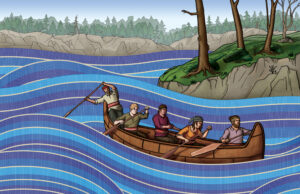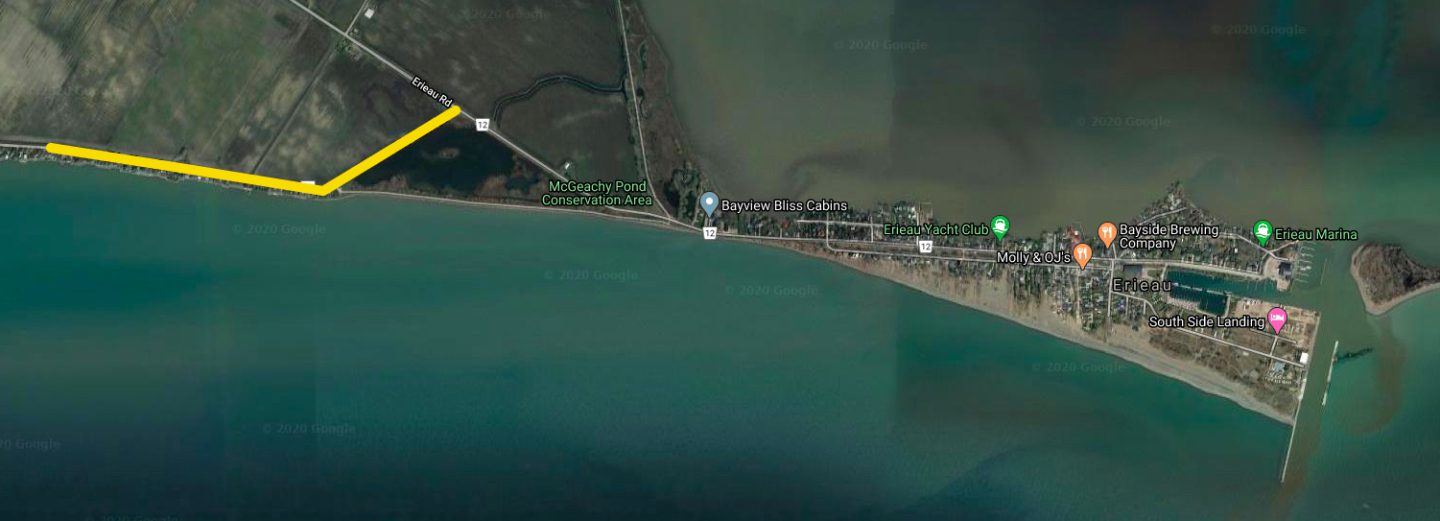
People & Culture
Rivers of resistance: A history of the Métis Nation of Ontario
“We were tired of hiding behind trees.” The ebb and flow of Métis history as it has unfolded on Ontario’s shores
- 4405 words
- 18 minutes
People & Culture

People living along a small stretch of Lake Erie shoreline in Chatham-Kent, Ont. have packed up their belongings and found new places to stay after their road was officially closed by the municipality.
Residents of Erie Shore Drive — about 123 homes — had to make alternate arrangements starting March 9. More than 40 of those homes are occupied on a full-time basis, with the rest serving as seasonal cottage properties.
The municipality voted to close the road after they learned there was up to a 40 per cent chance the road — which acts as a three kilometre man-made dike — protecting the shoreline would fail. Residents only had nine days to pack up and move out.

The road has previously been closed to non-essential traffic, but in the past residents were still able to access their properties. Now round-the-clock security will make sure even home and cottage owners don’t use the roadway.
“All public access will be denied and anyone caught violating the road closure may be charged accordingly,” notices tacked to properties say.
The road will be closed for at least six to eight weeks, possibly longer. And if the dike does fail, Erieau, Ont. — a community of about 500 people that relies on the access road — could become an island.
A relentless Lake Erie here in Erieau. @weathernetwork pic.twitter.com/D5hbr9alKr
— Mark Robinson (@StormhunterTWN) March 2, 2020
Chatham-Kent has already spent more than $1 million on monitoring and repairing the dike. In 2018, a report from a consulting firm was released, showing how unstable the dike was in the community that seemed constantly under a state of emergency. In March of 2019, Infrastructure Canada announced more than $16.5 million for flood mitigation to reinforce shorelines across the country — but the Erie Shore dike was not on the list.
This is a much better look at what the residents of Erie Shore Dr are dealing with. Homes have already been destroyed. @weathernetwork pic.twitter.com/2JwCTFlxSR
— Mark Robinson (@StormhunterTWN) March 2, 2020
A history of the dike and its failings
Erie Shore Drive was originally constructed in 1914. States of emergency along the roadway date back to 1997, when record-high water levels and storm events threatened a breach of the dike. An engineering study conducted at the time showed the shoreline was irreversibly eroding, requiring an estimated $11 million in intervention work. No such funding existed.

Years later, in 2001, the municipal council asked administration to look for provincial and federal funding. No funding was available.
Funding was solicited again in 2016 as lake water began overtopping the road. Then-MP Dave van Kesteren responded with a discouraging letter.
“My recent review of a similar request by Pelee Island only identified an opportunity under Small Communities Fund which would not apply to Chatham-Kent,” the letter stated.
A state of emergency was declared in August 2019 and again at the end of February 2020.
Lake Erie started 2020 with levels 72 centimetres higher than average and 12 centimetres higher than January 2019. According to Environment Canada and Climate Change, the levels were the third highest on record.
Lake Ontario in January was 48 centimetres above average and 24 centimetres higher than January 2019.
The high water levels were caused by an abundance of water entering Lake Ontario from a flooded Lake Erie, with nowhere for the water to go but into an already-flooded St. Lawrence River. The 2019 high-water levels were basin wide, affecting all bodies of water in the Great Lakes-St. Lawrence River system.
Are you passionate about Canadian geography?
You can support Canadian Geographic in 3 ways:

People & Culture
“We were tired of hiding behind trees.” The ebb and flow of Métis history as it has unfolded on Ontario’s shores

People & Culture
The story of how a critically endangered Indigenous language can be saved

Wildlife
Our love of deer runs deep. But as their numbers surge and damage mounts, it may be time for a reckoning.

Travel
The new movement building flourishing tourism hubs across Canada – one sustainable example at a time